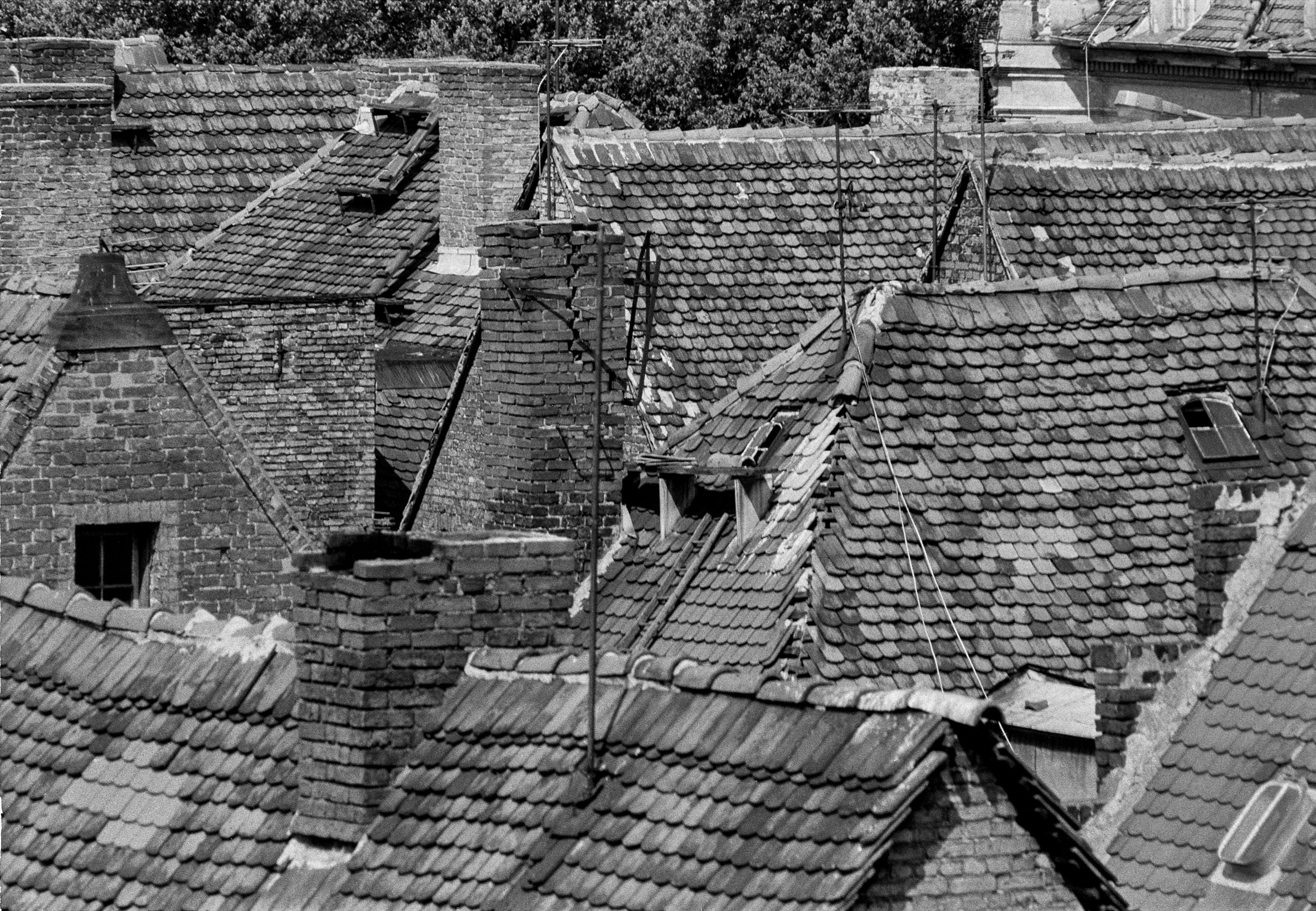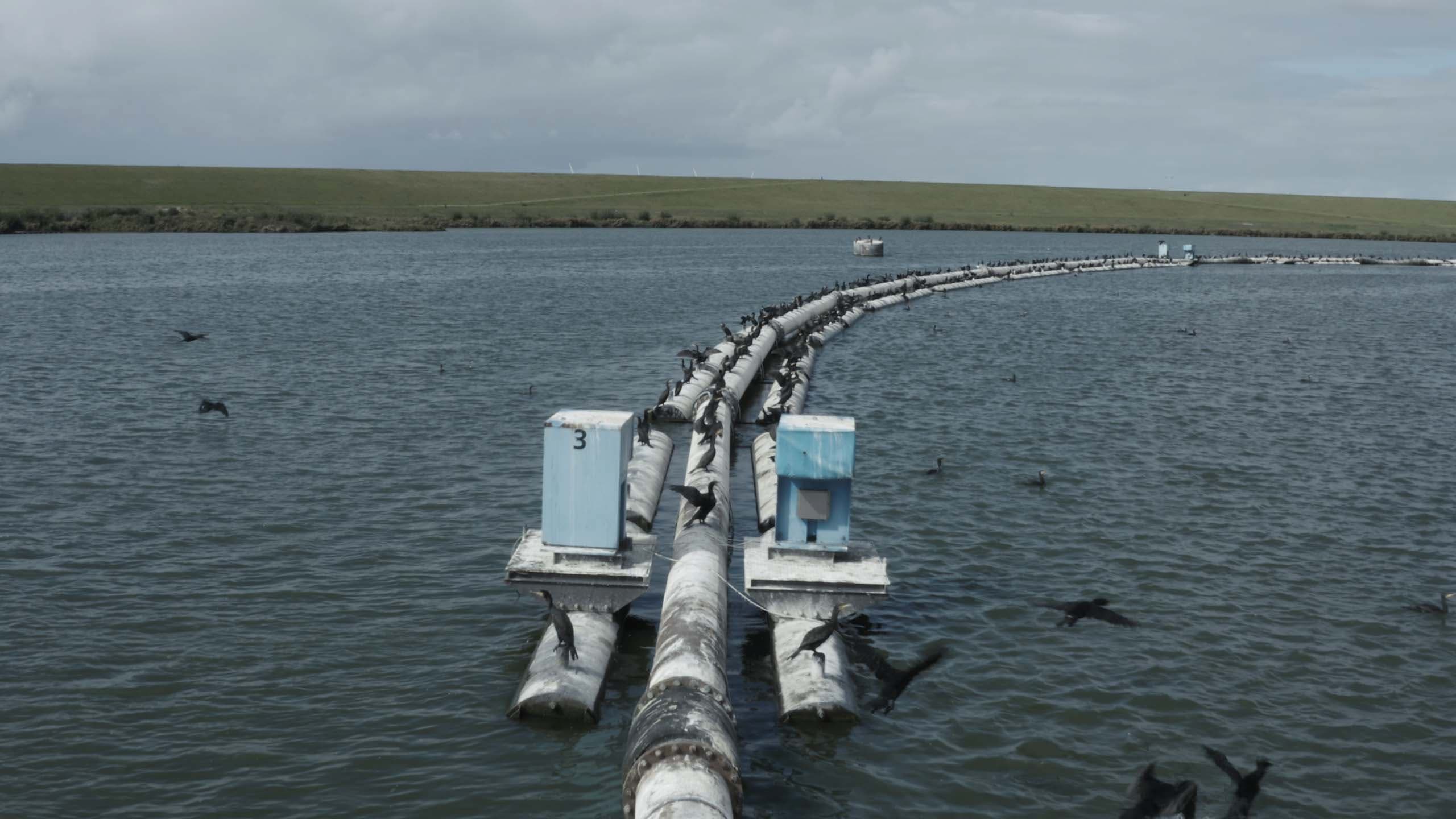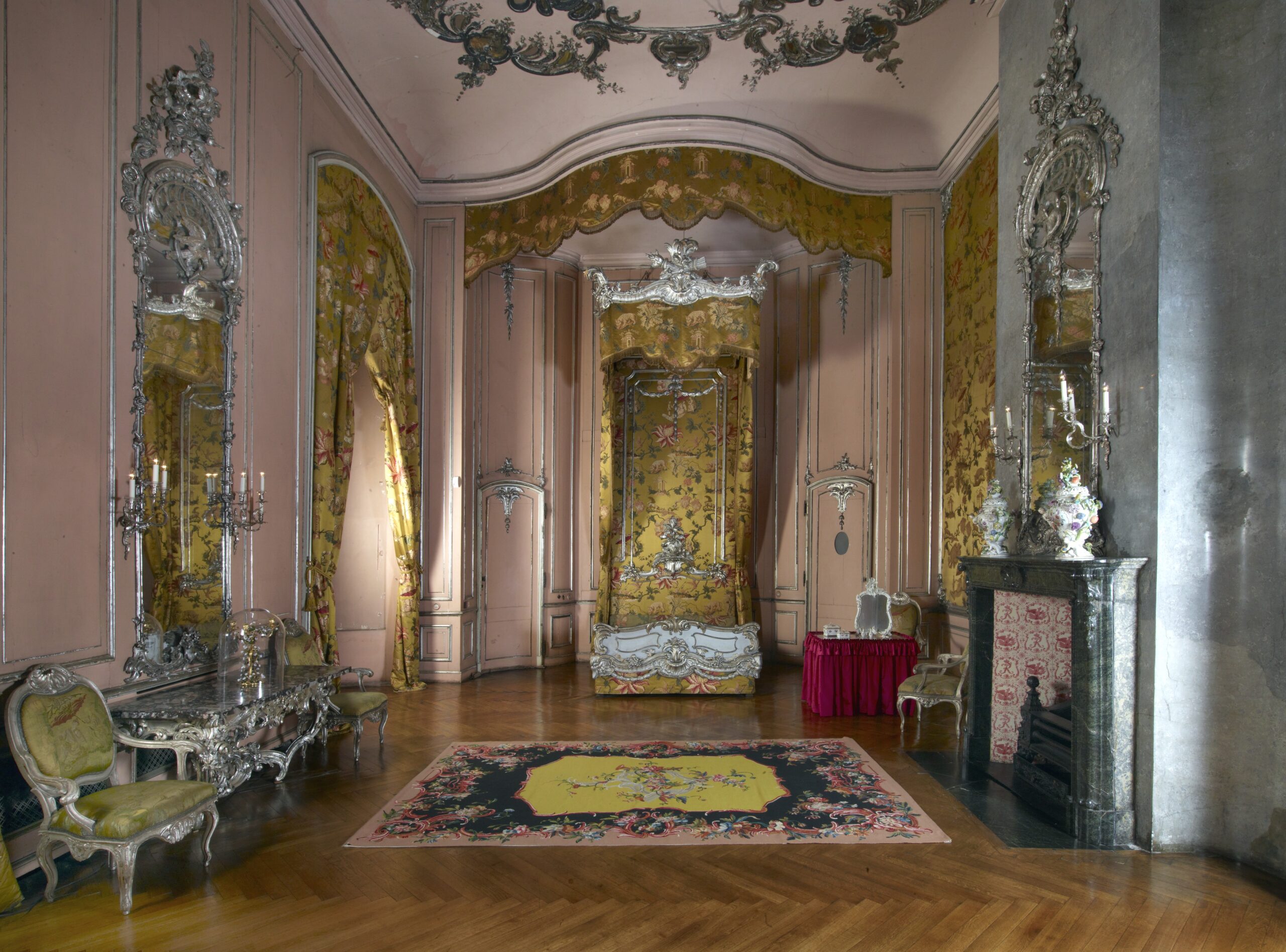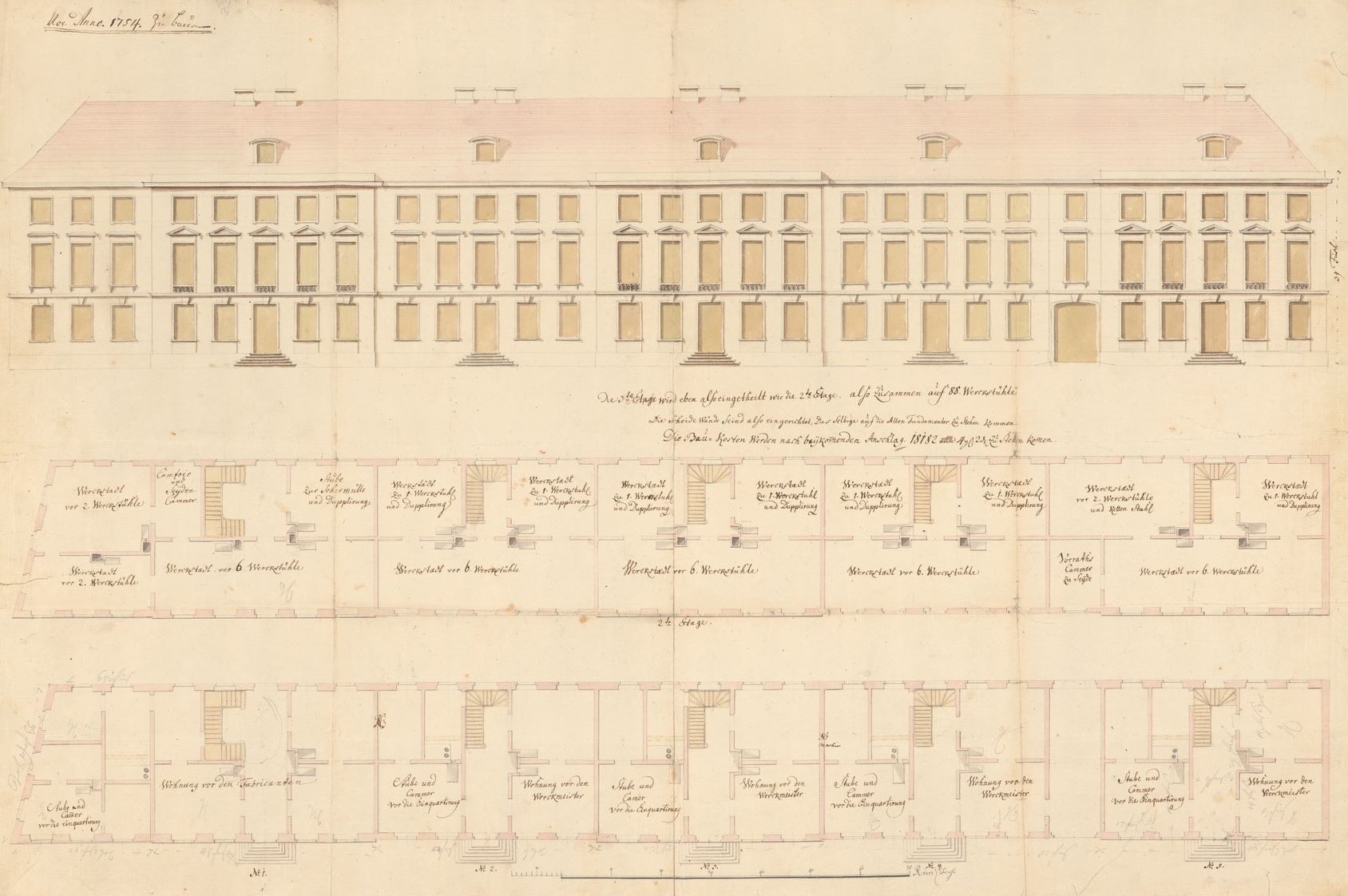
Potsdam’s Dutch Silk Manufactory
The corner of “Am Canal” and “Grün Straße” was once occupied by the five factory buildings of the silk manufactory of Heinrich Stiphout. The three-story buildings were large enough to accommodate workers, a warehouse, eighty-eight weaving looms, and a shop.
Frederick II was an ardent supporter of the silk industry in Potsdam. The fabric was so expensive to import that he subsidized its production and manufacture in his own territory, recruiting experts from abroad in exchange for special privileges. The silk manufacturers were primarily Jewish or Huguenot in origin—with the exception of Heinrich Stiphout, who was Dutch. —with the exception of Heinrich Stiphout, who was Dutch.
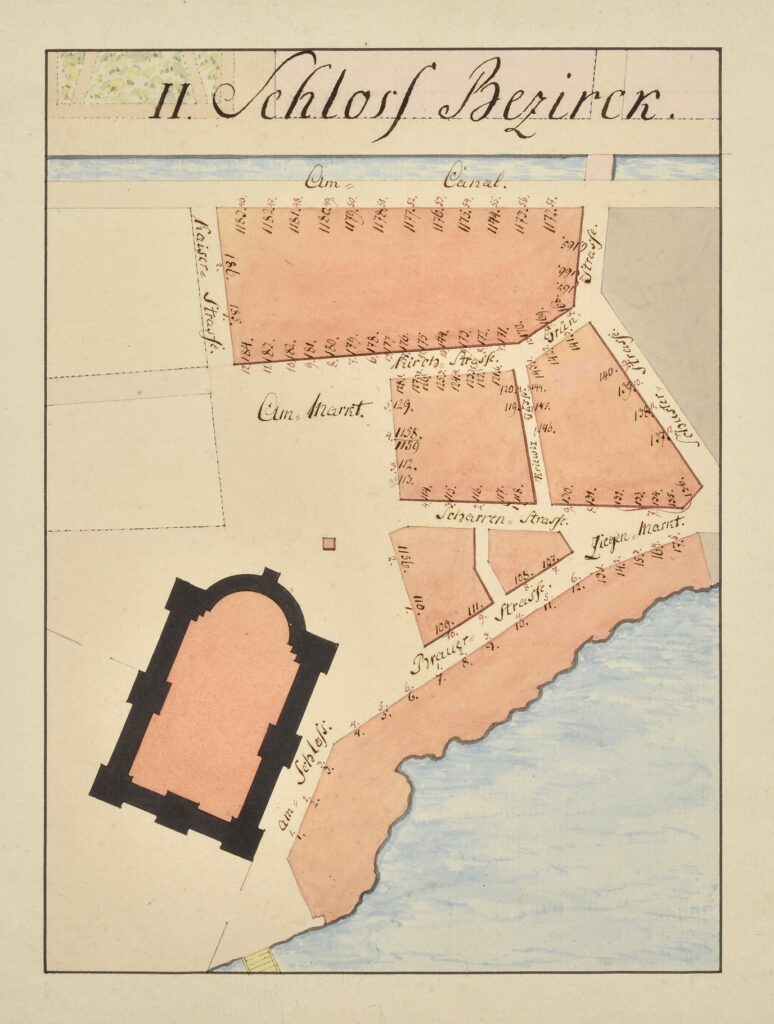
The silk master Stiphout was born in Amsterdam in 1703 and learned his craft there before coming to Potsdam in 1750. In 1754, he was given five fully-equipped factory buildings on the street Am Kanal. Despite generous financial support, the company lost money and neared bankruptcy within only a few years; yet both the factory and its founder continued to receive major subsidies from Frederick II, who gave Stiphout a private house and invested an additional 4,000 Reichsthaler in the company. Since Stiphout had no capital of his own, the king ordered two additional shareholders to support the enterprise. One of them was the architect Jan Bouman, who had to invest almost 10,000 Reichsthaler in the silk manufactory. For him, it was a losing proposition: although Stiphout had the necessary technical knowledge, economic success required more than just a high-quality product. And Stiphout was not a good businessman. Yet still the king continued to champion him and prohibited the import of fabrics from Holland. Finally, an investigative report undertaken at Bouman’s prompting, and the ongoing lack of profitability despite generous funding, convinced the king that the Dutchman was unable to manage the business. In 1755, Stiphout was forced to relinquish his share of the company and work as a foreman in the factory that had once belonged to him.
The original buildings on this site were destroyed in World War II.
– Leonie Schmidt, Museum Barberini

This item was taken from the audio walk “Holland in Potsdam”, which was created on the occasion of the exhibition “Clouds and Light. Impressionism in Holland” (8 July – 22 October 2023) and leads to 20 different places in Potsdam with a Dutch connection. Like its predecessor projects “Italy in Potsdam” and “France in Potsdam”, the city tour is permanently available as a free audio tour on the Barberini App and will also be published in the course of 2023 as a art guide in the series of publications of the Stiftung Preußische Schlösser und Gärten.
Header Image: Drawing of the silk factory of the manufacturer Heinrich Stiphout in Potsdam. Floor plans 1st and 2nd floor and view, Brandenburg Main State Archive

